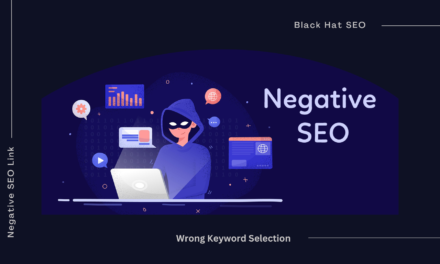So, here’s the scoop- Your website is getting lots of love from a specific country, thanks to a killer PR campaign or a viral sensation that’s turned you into an international sensation. Whether it’s time to expand, launch a new product, or diversify, your SEO strategy is key.
Expanding your horizons can lead to fantastic rewards, but there are dragons to slay, too. The SEO wizards agree on some essential factors for success:
1. Extensive Keyword and Competitor Research: Knowing your keywords and your competition is like having a treasure map. Conducting local keyword research is a fundamental step in acquiring valuable insights into search volume and the potential web traffic associated with keywords specific to your product or service within local markets. In addition to examining search volume, it’s imperative to give due consideration to difficulty. This metric serves as a pivotal indicator, indicating the level of competitiveness that keywords may exhibit across various languages and markets.

Drawing from the keywords and queries that surface during the keyword research phase, you can understand the landscape of organic competitors within your new market or markets. Organic competitors, in this context, refer to the entities appearing in the Search Engine Result Pages (SERPs) and securing rankings for the search terms that align with your target audience. It is important to acknowledge that organic competitors may exhibit commonalities across international borders, yet they can also manifest significant disparities from one market to another. Thus, it proves beneficial to investigate the presence of your primary organic competitors across countries, the languages in which their website(s) is made available, and the quality of their content.
2. Market Profitability Assessment: First up, you need to know if this new market will be a goldmine or a money pit. Dive into international keyword research to learn what language your new market speaks and how they search for your products. Internal departments within your organization might have already done foreign market research. While you could leverage their insights for your next steps, a more in-depth exploration is needed. As a minimum requirement, it’s essential to cross-reference their findings with your SEO data. This approach allows you to identify international markets where SEO opportunities are already apparent and prioritize your efforts accordingly. You should analyze the origins of your most converting traffic. Google Analytics provides a multitude of tools for accessing such critical data. By delving into audience insights and correlating e-commerce data with traffic sources, you can pinpoint valuable information. It becomes imperative to assess the traffic potential within the foreign market. One effective method is to scrutinize the keywords used by your foreign competitors and gauge the search demand they generate.

After keyword research, a Google search for the identified terms unveils local competitors. You can then proceed to conduct more comprehensive research on them. This includes identifying the most promising phrases to target and gaining a deeper understanding of the local market landscape.
3. Social Networks in the Target Market: You might be thinking, “Why should I care about social networks?” Well, because it’s where many shoppers start their journey, especially when making high-value purchases. It’s like a pit-stop on their road to buying. The key is to know which social networks your new audience is cruising through.

4. Hreflang: Hreflang tags serve as signposts that indicate the intended languages and geographic targets of your web pages. Their primary purpose is to facilitate Google’s understanding of which page version is the most relevant for its users based on their language and location. For example, consider when someone in Paris enters a search query relevant to one of your product pages. In this case, the hreflang tag plays a crucial role by signaling to Google that the French version of your page should be featured in the search results.
For precision in targeting users, it is advisable to incorporate hreflang tags that encompass both language and region. For instance, employing an ‘en’ tag communicates to Google that your page is designed for all English speakers. However, you can enhance your targeting by adding tags that emphasize specific geographical areas. For example, ‘en-ca’ can be employed to target English speakers in Canada, while ‘en-us’ serves the same purpose for English speakers in the United States.
5. URL Structure: Geotargeting involves delivering the appropriate version of your website to users based on their location. Just like language, your URL structure speaks volumes to both search engines and users. The URL structure can be configured in three distinct ways for targeting international markets:
1. ccTLD (country-code Top Level Domain): These are specific country code domain extensions (e.g., .fr, .de, .nl).
2. gTLD (generic Top-Level Domain) with local subdirectories: This structure combines generic top-level domains (e.g., .com, .org, .net) with local subdirectories (e.g., .com/fr, .org/de, .net/nl).
3. Subdomain: It involves adding a local subdomain to the root domain (e.g., fr.domain.com, de.domain.org, nl.domain.net).
The selection of the URL structure depends on various factors, and there is no universally right or wrong setup. Consider the markets you plan to enter, the niche you operate in, and the resources available to make an informed decision. Some countries also have specific regulations governing domain names. For certain ccTLDs, it may be necessary to have a local residence or a company based in that country (e.g., Norway) to register the domain.
6. Shopping Cart Localization: Once your potential customers are ready to buy, you’ve got to make the checkout process a smooth ride. The currency, language, payment methods, and delivery info must match their preferences.
7. Broaden Your Horizons Beyond Google
While Google often takes center stage in the realm of SEO, it’s essential to consider other search engines when expanding internationally. In some of the world’s largest markets, such as China and Russia, a majority of users turn to entirely different search platforms. In Russia, the dominant search engine is Yandex. On the other hand, Google is effectively blocked in China due to the country’s Internet censorship policy. Most Chinese users conduct online searches through Baidu.
Neglecting alternative search engines in these markets is not an option, and it’s crucial to acknowledge that each search engine has its own unique algorithms. Notably, indexing can be considerably slower for both Yandex and Baidu, meaning that you should prioritize long-term results over quick wins. Paid search is of paramount importance on Baidu. In contrast, Yandex still places value on meta keywords, a metric that Google phased out from its ranking algorithm. So, you must tailor your approach to suit the specific market you’re entering.
8. Commence Localized Link Building
To bolster your brand’s presence in local search results, it is crucial to acquire links from local platforms relevant to your industry. The more hyperlocal these platforms are, the more advantageous it becomes. For instance, if you’re launching a new hotel in Berlin, links originating from travel platforms within the city of Berlin will carry more weight than those from Munich or Hamburg.

Actively pursue opportunities within journalism and position yourself as an expert source. Consider guest posting on influential websites that cater to the regional audience. Utilize social media channels to forge connections with local influencers and businesses. It is also advisable to engage a translator or an individual well-versed in the language and customs of the target region to manage your outreach efforts. As you expand your brand’s presence in the target market, you’ll reap the rewards of high-authority backlinks.
9. Be familiar with local regulations
Compliance with local regulations is of utmost importance and should be approached with diligence to steer clear of potential legal complications. An example is the European Union’s General Data Protection Regulation (GDPR), which is applicable whenever data tracking and analysis involve EU visitors, irrespective of the location of your company. In the United States, accessibility is a pivotal concern, notably under the Americans with Disabilities Act. To ensure adherence and mitigate legal grievances, companies must adhere to the globally recognized Web Content Accessibility Guidelines (WCAG).
For those who may not be well-versed in these regulatory landscapes, it is imperative to acquaint oneself with the distinct local regulations and their implications.
These elements hold the key to your success as you venture into new markets. But here’s the twist – every brand and market is unique. There’s no one-size-fits-all play-book, though. So, be a wise explorer. Adapt these tips to your unique strategy and ensure they align with your broader business goals. Most importantly, this adventure involves teamwork. Gather your fellow-travellers from different departments in your organization for this epic quest.





